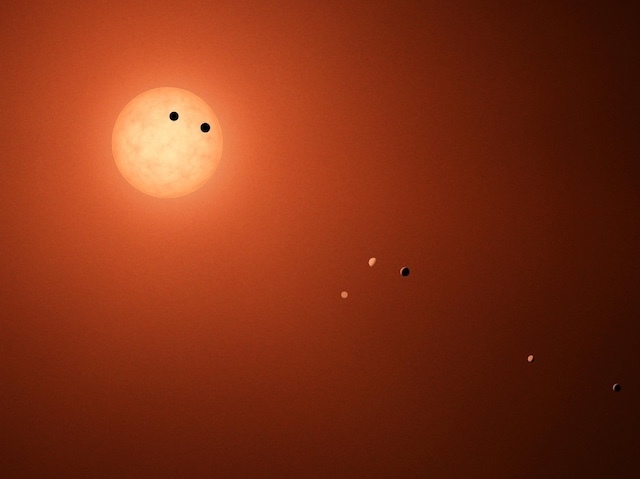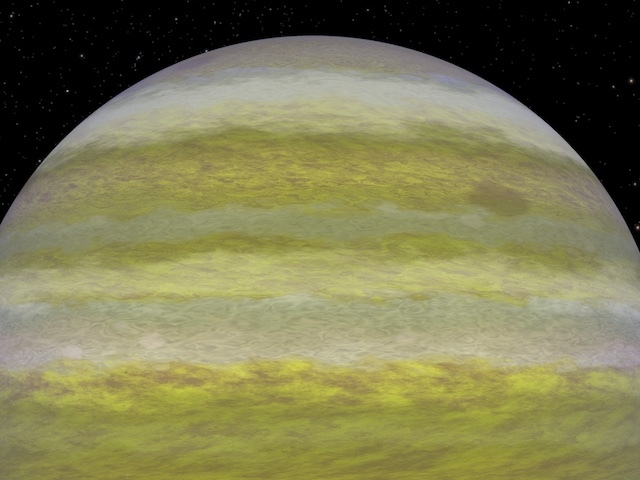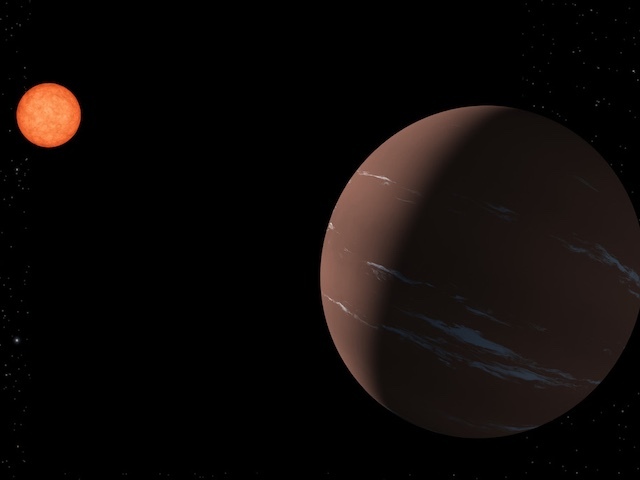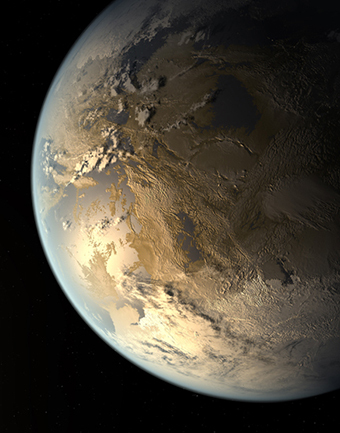News | December 30, 2015
Year in Review: Top 5 exoplanet moments of 2015
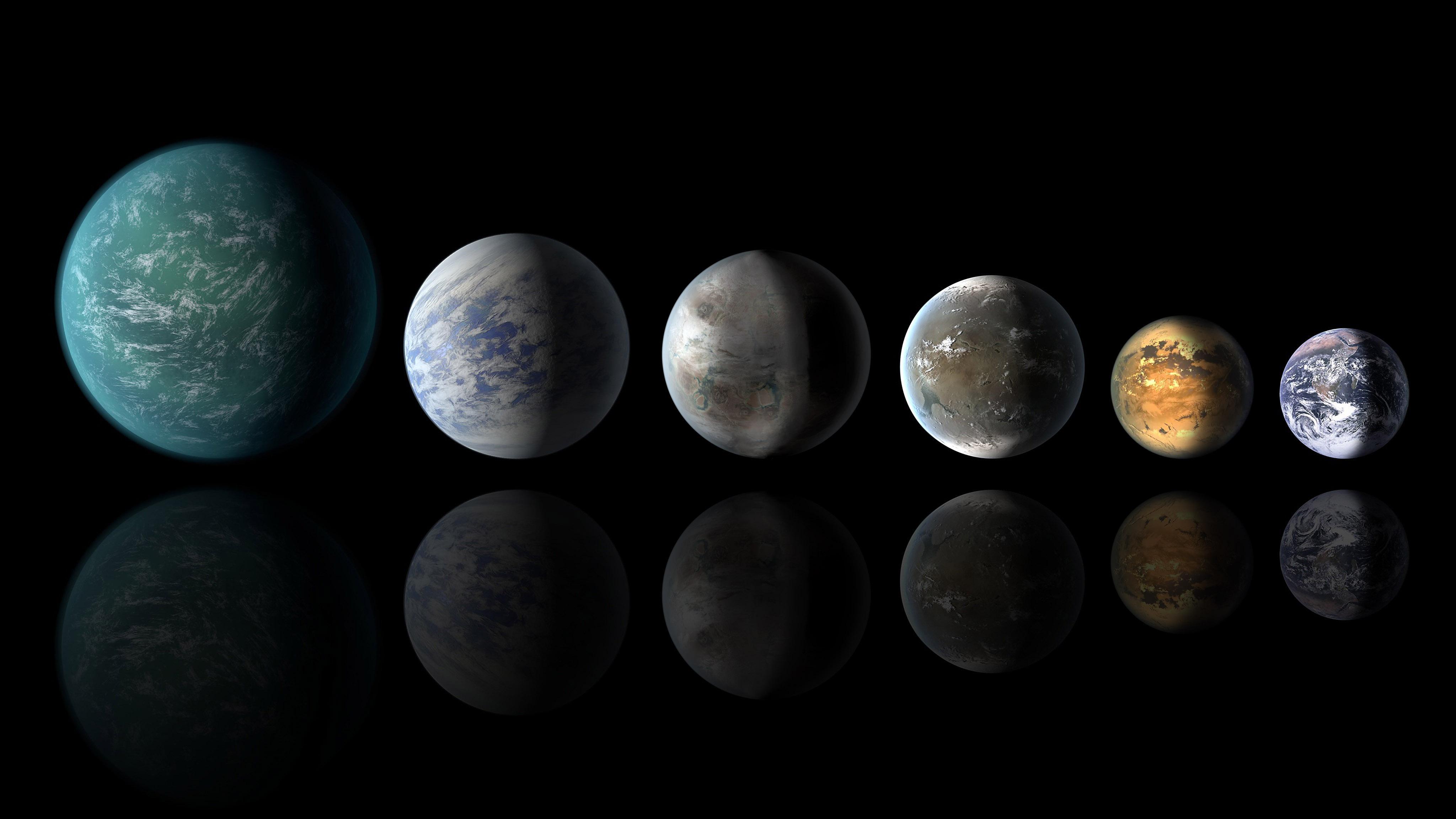
This year's search for another Earth brought discoveries from the far-flung corners of the galaxy. This image shows the relative sizes of all of the habitable-zone planets discovered to date alongside Earth. Left to right: Kepler-22b, Kepler-69c, Kepler-62e, Kepler-62f and Earth (except for Earth, these are artists' concepts). Image credit: NASA Ames/JPL-Caltech
Exoplanet exploration, or the search for planets outside our solar system. It's a field that often sounds mysterious, but seeks to answer an essentially simple question– are we alone in the universe? In 2015, the search for another Earth brought incredible discoveries along the way. We've listed five of the most important discoveries of 2015 as we count down to a new year, and new worlds.
Earth's Bigger, Older Cousin– Kepler-452b
A newly discovered exoplanet, Kepler-452b, came the closest of any found so far to matching our Earth-sun system. This artist's concept depicts one possible appearance of the planet Kepler-452b, the first near-Earth-size world to be found in the habitable zone of star that is similar to our sun. The habitable zone is a region around a star where temperatures are right for water -- an essential ingredient for life as we know it -- to pool on the surface. Scientists do not know if Kepler-452b can support life or not.
Really Ancient Earths– Kepler-444 system
2015 started with a bang. Or rather, a discovery almost as old as the Big Bang, when astronomers found a planetary system nearly as old as the universe: a star that's 11.2 billion years old, with at least five Earth-sized planets. The tightly packed system, named Kepler-444, is home to five small planets in very compact orbits. The planets were detected from the dimming that occurs when they transit the disk of their parent star, as shown in this artist's conception.
First Baby Photos– LkCa15 system
450 light-years away, a young star with a transition disk is a birthplace for planets. This year, astronomers captured the very first photo of a planet in the process of being formed, seen in the above color composite image. Although thousands of exoplanets have been discovered, only about 10 have been directly imaged. None of those pictures have come close to showing a planet as young as star LkCa15's protoplanet.
1K for Kepler-– Telescope confirms 1,000th planet
In 2015, NASA's Kepler Space Telescope hit a big milestone, verifying its 1,000th planet outside our solar system. At the beginning of the year, Kepler had monitored more than 150,000 stars beyond our solar system, and offered scientists an assortment of more than 4,000 candidate planets for further study. Heading into the new year, the search continues for Earth-size habitable zone worlds around sun-like stars. Kepler telescope's second mission, K2, has already yielded an additional 32 confirmed planets.
20 Years of Exos– 51 Pegasi b
This year we celebrated the discovery of 51 Pegasi b in October, 1995. Two decades ago, this discovery of a planet orbiting a sun-like star proved definitively that planets existed outside our solar system. This giant planet, which is about half the mass of Jupiter and orbits its star every four days, helped launch a whole new field of exploration.


